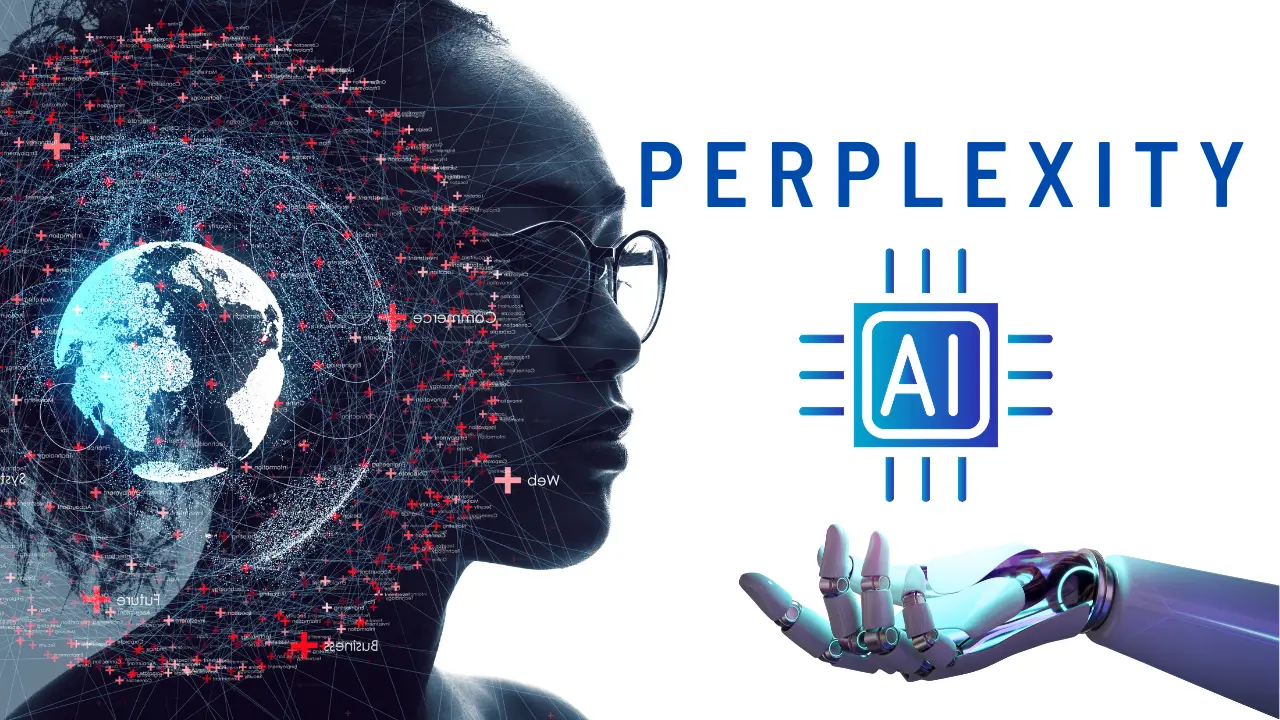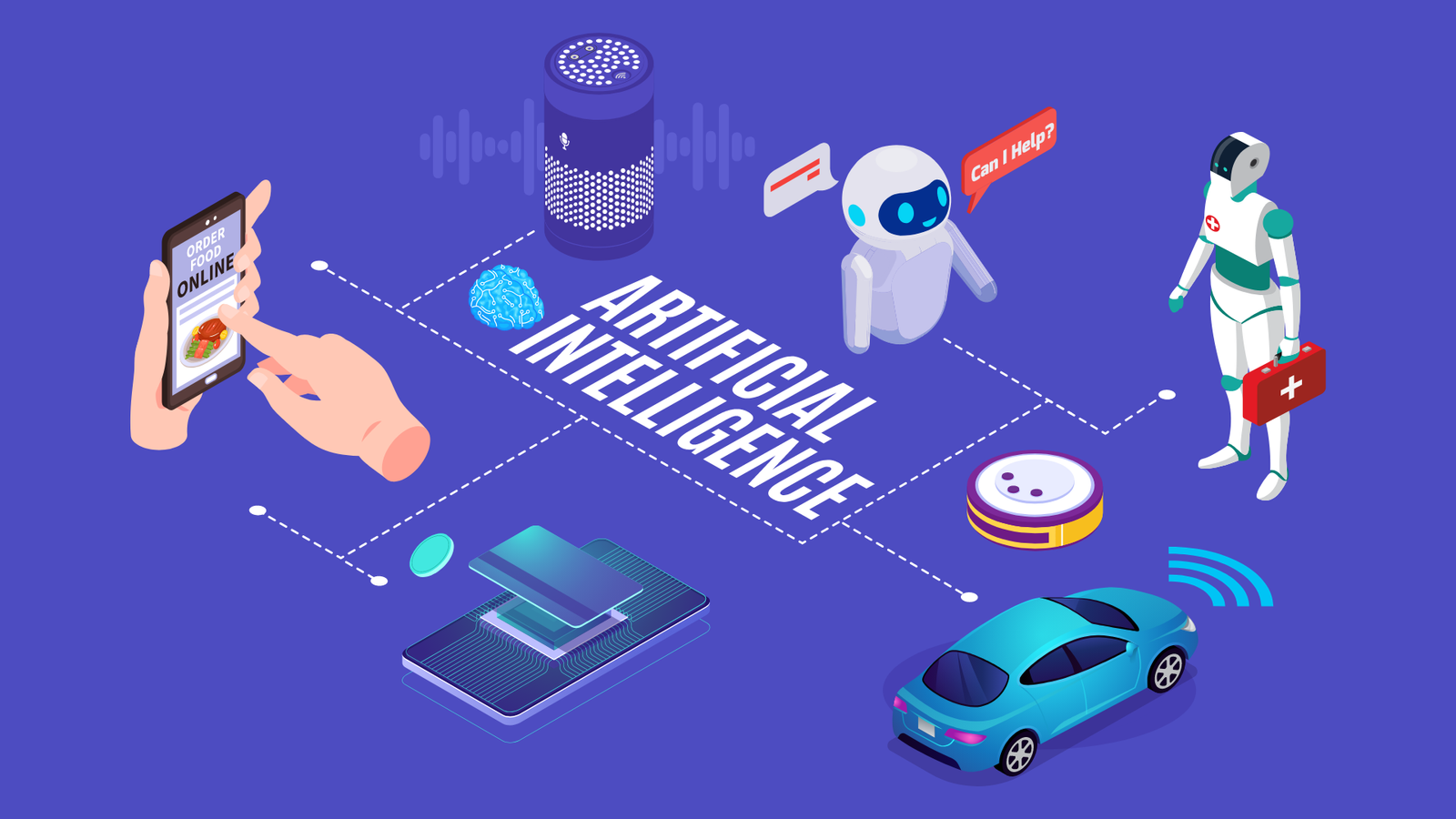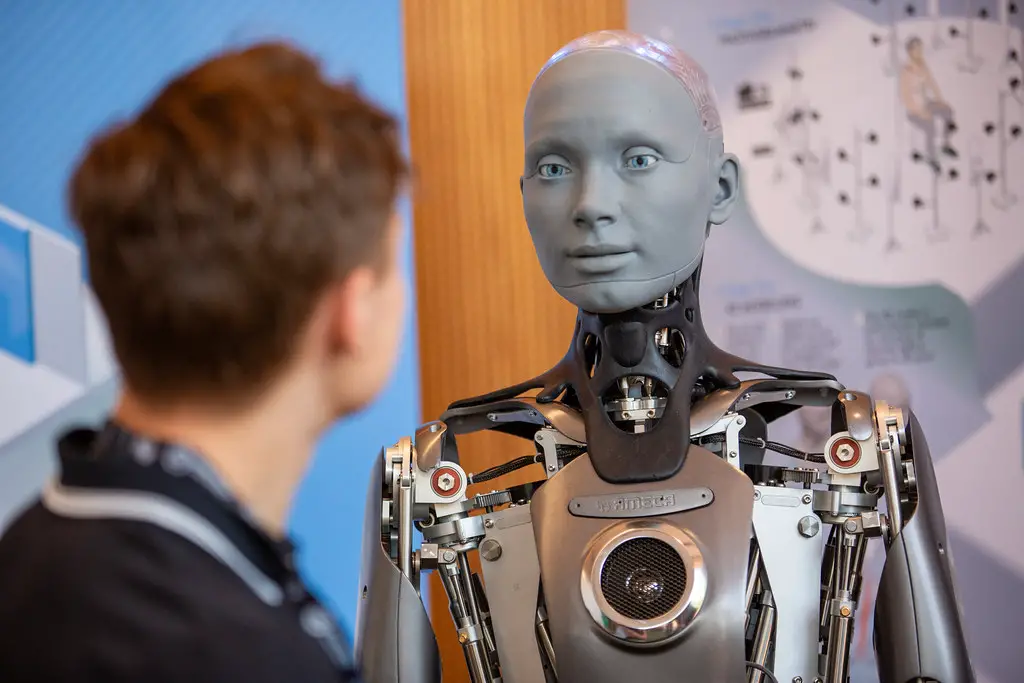Artificial intelligence (AI) and cybersecurity are two diamonds studded on the crown of technological evolution. On one hand, the application of AI in cybersecurity is shaping up to be one of the critical technological advancements today. This work gives a commanding overview of their intersection, from applications of AI in operations like threat detection, predictive analytics, and incident response to evaluating the pros and cons, including ongoing advancements in the sphere. Further, a deep-dive into key AI algorithms employed in cybersecurity, like neural networks and machine learning, is initiated, exploring their unique traits and pivotal roles in bolstering security.
Application of AI in Cybersecurity
The Fusion of Artificial Intelligence and Cybersecurity: A Current Perspective
As we delve into the 21st century, the sphere of cybersecurity, along with Artificial Intelligence (AI), has transfigured the landscape of technological advancement. Present times mark a shift towards an unsustainable surge in sophisticated cyber-attacks and security breaches, precipitating a pressing need for advanced countermeasures to safeguard our cyberspace. A promising solution lies within AI, which by augmenting human cognitive capabilities holds a tremendous potential to uplift cybersecurity measures.
AI’s contribution to cybersecurity can initially be comprehended in terms of predictive capabilities. Predictive analytics fueled by AI systems harness data and analytics to identify patterns and predict future outcomes. Such an application is critically essential in apprehending potential cyber threats before they actualize. By continuously monitoring network traffic, AI enables organizations to be proactive rather than reactive, mitigating the risk and reducing any potential loss of data or disruption of service.
The next significant aspect is AI’s involvement in combating phishing, a dominant contributing factor towards the advent of cyber-attacks. Phishing attempts, convincing yet deceiving, can obscurely bypass traditional security measures. Here, AI systems prove to be effective by utilizing natural language processing to discern deceptive emails. Powerful AI algorithms can analyze the semantics and structure of an email, thereby distinguishing phishing emails from the legitimate ones with an impressive success rate.
AI triumphs significantly in automating threat detection. Instead of manual and inevitably error-prone human monitoring, AI systems promptly detect anomalies using machine learning algorithms. Systems like these surf through mammoth sets of data, tirelessly working round the clock with improved accuracy. Moreover, such automation empowers a faster response time, thereby reducing the ‘dwell time’ of threats in the system while improving overall cybersecurity resilience.
AI further brings forth Intrusion Detection Systems (IDS) to a higher plane of efficiency. The traditional IDS, relying on pre-existing data of known threats, often fails to recognize newly crafted attacks. Conversely, AI-driven IDS can identify unknown threats and zero-day exploits by applying machine learning to establish patterns of unusual behavior leading to proactive threat detection.
However, while welcoming the capabilities of AI, one cannot flap the insensitivity towards the fact that these same AI tools can also be leveraged by cybercriminals to perpetrate more severe cyber-attacks. This paradox of AI being both the defender and potential enabler of advanced threats illuminates the importance of controlled utilization and concurrent development of cybersecurity best practices.
Certainly, the alliance of AI and cybersecurity is no longer the stuff of fiction. It is a palpable reality and a prerequisite in our digital-driven world. The interplay of these two disciplines is reshaping the broader perspective of cybersecurity, underpinning advanced protection and paving the way for a safer and more secure cyber landscape.
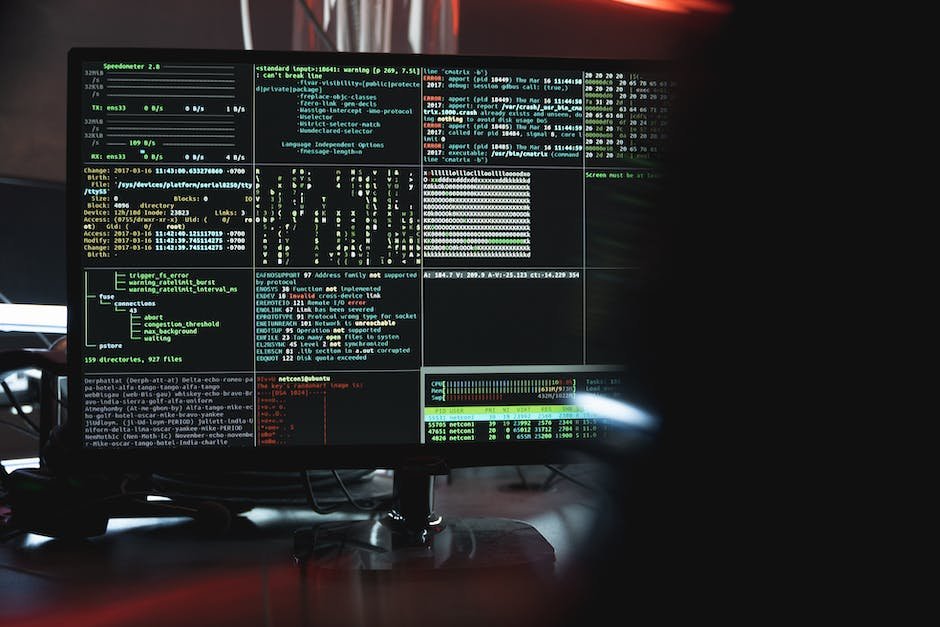
AI Algorithms for Cyber Security
The Confluence of Machine Learning and Advanced Encryption: Bridging Cybersecurity Frontiers
Following the convergence of artificial intelligence and cybersecurity, the pertinence of advanced algorithms in fortifying digital defenses has garnered considerable attention. Delving further into this dialogue, certain AI-based algorithms have shown promise to be instrumental in shaping the future of cybersecurity protocols.
Foremost amongst these is Machine Learning (ML), the branch of AI that imbues software with the ability to learn from data and make data-driven decisions. In the cybersecurity framework, ML algorithms can be employed in the study of normal network behavior, thereby enabling the detection and immediate redressal of deviations, indicative of cyber threats.
Supervised Learning algorithms, a subtype of ML, can be leveraged to classify benign and malicious network activities. They function through a process of learning via labeled data sets, subsequently utilizing this knowledge to categorize new, unseen data.
Unsupervised Learning, another subtype of ML, can be used to detect anomalous activities that deviate from established ‘normal’ patterns, promoting enhanced intrusion detection. Unlike its counterpart, Unsupervised Learning does not rely on pre-labeled data, but identifies patterns and discrepancies in raw, unprocessed data.
Additionally, Reinforcement Learning, operating on a reward-based system, can dynamically adapt to shifting cybersecurity environments and respond with decision-making strategies that optimize security. This unique algorithm learns through trial and error, perfecting its rule-setting protocols based on success indicators and consistently refining the security strategy towards higher efficiency.
Aside from ML algorithms, advances in encryption methods, specifically using AI-powered algorithms, have started changing the landscape of cybersecurity significantly.
Homomorphic Encryption (HE), an approach that allows computation on encrypted data without decryption, presents a unique intersection between AI and cybersecurity. Constant improvements of this technology are being made due to the potential it holds for secure cloud-based data storage and processing.
AI algorithms can also augment the resilience of encryption methods through Advanced Encryption Standard (AES) cryptographic protocol with cryptographic key generation. By generating and managing cryptographic keys, these AI algorithms can dramatically enhance security during data encryption and decryption processes.
Into the bargain, AI-based Evolutionary Algorithms (EAs), inspired by biological evolution, can be harnessed in cybersecurity. Conceptualized on the mechanics of mutation, selection, and inheritance, EAs are invaluable in developing high-quality security solutions that can withstand the evolution of cyber threats.
In essence, the research and development in AI algorithms for cybersecurity are shaping a new wave of technologies that promise to foster an environment less prone to cyber threats. It is becoming increasingly clear that the future of cybersecurity lies inevitably intertwined with AI, with algorithms such as those explored here, helping forge this dynamic synergy.

Challenges and Ethical Considerations in AI and Cybersecurity
The application of artificial intelligence (AI) to cybersecurity is a leap in technological advancement brought about by the desire to bolster defenses and predict threats in real time. The capabilities of AI have opened doors to enhanced encryption practices, evolutionary algorithms, and advanced machine learning methods, mirroring a paradigm shift in the cybersafety world.
Machine learning algorithms—supervised, unsupervised, and reinforcement learning—have shown great promise in bolstering cybersecurity measures. In supervised learning, a resultant output is already known and the system learns to make accurate predictions based on the classification of input data. This provides a significant advantage in recognizing patterns in vast amounts of data, consequently aiding in the identification of potential threats.
On the other hand, unsupervised learning does not rely on known outputs but instead, identifies novel patterns and unusual data or activities that could signal potential threats. Reinforcement learning is a more dynamic approach where the system adapts to changes and improves its decision-making process based on the rewards linked to its actions. This enables agile reactions to threats and a real-time enhancement of systems’ defenses.
Moreover, AI has played a crucial role in advancing encryption practices. Homomorphic encryption, powered by AI, allows calculations to be carried out on encrypted data without decrypting it—a critical aspect in maintaining data security. The introduction of AI-generated cryptographic keys in the Advanced Encryption Standard (AES) cryptographic protocol has created a robust shield against possible attacks on data, thus enhancing the integrity and confidentiality of information.
Further underlining the role of AI in cybersecurity, evolutionary algorithms (EA) that are inspired by evolutionary biology have been integrated into cybersecurity practices. These algorithms use mechanisms such as mutation, crossover (recombination), and selection to solve optimization problems, consequently creating a novel method of threat detection and defense strategy formulation.
However, these advancements bring about a wave of ethical issues and challenges. There is a constant balancing act between ensuring security and maintaining privacy and autonomy. AI cybersecurity systems, with their predictive abilities, can inadvertently breach privacy regulations. Furthermore, the misuse of AI technology in cybersecurity can compromise user trust and can lead indirectly to cases of discrimination and bias that result from algorithmic decisions.
While AI offers highly adaptable defenses against threats, it also provides an avenue for these tactics to be used maliciously. This creates an uneasy battlefield, as hackers can exploit these algorithms to create sophisticated cyberattacks. In terms of accountability, pinpointing responsibility in the event of an AI-driven cybersecurity failure presents challenges, given that AI operates autonomously. Moreover, the omnipresence of AI also can lead to an over-reliance on AI for cybersecurity measures, potentially stifling human creativity and intuition in the cybersecurity field.
By applying these advanced technologies ethically, we can effectively shield our data and digital systems from potential harm without infringement of privacy regulations or creating discrimination. As AI advances further, researchers and professionals must forge ahead with a keen understanding of the trade-offs, challenges, and ethical implications at play. Personal responsibility, industry-wide codes of conduct, and regulatory policies will be instrumental in establishing a just framework for the utilization of AI in cybersecurity.
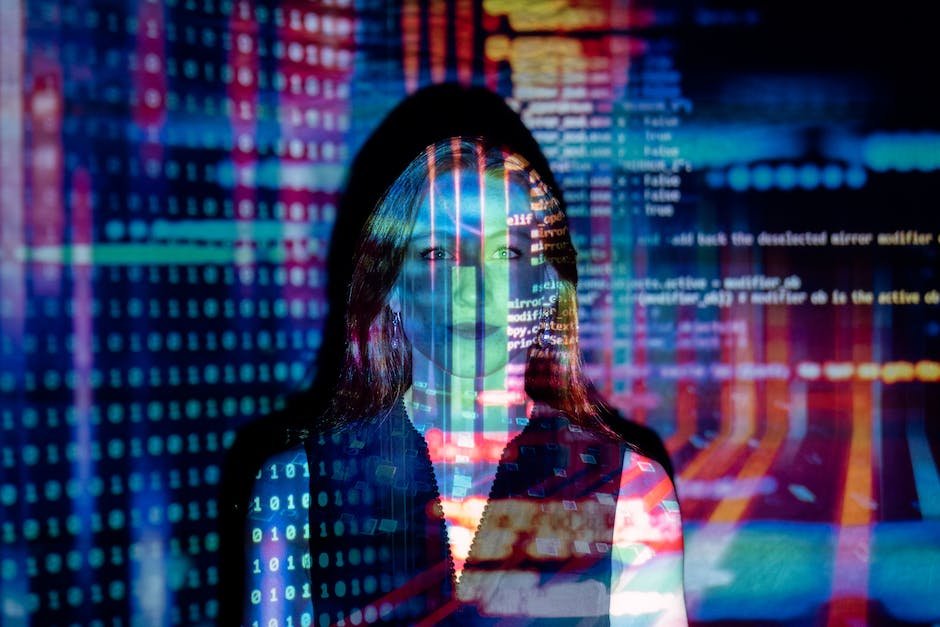
The Future of AI in Cybersecurity
While we delve into the potential applications of AI in cybersecurity, it is critical to address one under-explored territory: the role of Deep Learning. Deep Learning, a subset of Machine Learning, deploys artificial neural networks with various abstraction layers to pick out intricate patterns from massive amounts of data. The power of the method lies in its ability to evolve independently: it iteratively improves its performance without continuous human intervention, making it a promising tool in cybersecurity systems.
The implementation of Deep Learning could revolutionize the anomaly detection process in network traffic. By learning to identify what ‘normal’ network traffic looks like, the Deep Learning algorithm can then spot any anomalies or deviations, flagging them as potential threats. The autonomous improvement of these detection accuracies promises a more secure cyberspace in the future.
Simultaneously, the use of AI in User Behavior Analytics (UBA) presents an innovative frontier. UBA involves keeping track of, recording, and studying the patterns inherent in user behavior. AI can strengthen UBA systems, allowing for the detection of unusual behavior patterns, thereby identifying internal threats, compromised users, or even malicious insiders. Duly, AI stands poised to transform the insider threat detection landscape under cybersecurity.
However, even with these advances, robust measures need to be implemented to prevent the ‘weaponization’ of AI by malicious entities. This encompasses mechanisms to curb the misuse of AI tools for creating advanced malware, causing a new era of AI-powered cyber-attacks. Therefore, this necessitates a collaborative approach, bringing together tech-firms, cybersecurity professionals, and policymakers to ensure secure AI integrations.
In conjunction with this, the reformation of digital forensics utilizing AI cannot be overlooked. Digital forensics, an important aspect of cybersecurity, often involves sifting through large volumes of data to identify malicious activity. AI, with its pattern recognition capabilities, can speed up this process, thus reducing the time to respond to cyberattacks, potentially mitigating irreversible damage.
AI, enabled by Quantum computing, could lead to the development of extremely secure, unhackable systems. Quantum cryptography, if realized, can revolutionize cybersecurity, given its theoretical security guarantees. However, the technology is still in nascent stages and has a long journey ahead.
This discussion demonstrates the boundless potential of AI in shaping the future of cybersecurity. From advanced threat detection to real-time response mechanisms, the horizons are expansive as they are captivating. Nonetheless, with power comes responsibility. As AI propels cybersecurity into new arenas, maintaining ethically sound practices and ensuring the mitigation of unintended consequences becomes paramount.
In this relentless pursuit of enhanced cybersecurity via AI, human creativity and intuition must remain at the helm. After all, a machine can have all the learning in the world, but it will never possess the one thing that sets humans apart: the power to create, innovate, and think outside of the box. Without the human element, even the most technologically advanced AI cybersecurity system will remain a tool – sterile and devoid of imagination and inventiveness. Balancing technology with human insight will remain the guiding principle as we embark on this fascinating journey to explore AI-driven cybersecurity systems. The architecture of tomorrow’s cybersecurity looks brighter, and indeed, more secure as we pave the way forward with AI. At this intersection of technology and security, one fact resounds above the whispers of uncertainty: This amalgamation of AI and cybersecurity points towards a future that is not only more secure but also governed by the principles of ethical, responsible AI utilization.

The discussions aren’t only about present scenarios, but also, critical reflections on the ethical considerations and potential challenges posed by AI’s integration in cybersecurity are also highlighted, including aspects like privacy, misuse potential, and algorithmic bias. Moreover, potential strategies to ensure ethical AI usage in cybersecurity are also laid out. Peeking into the future, one cannot ignore the influence of AI on cybersecurity, with upcoming advancements such as quantum computing, advanced predictive analytics, and autonomous systems contributing to its evolution. Indeed, the future of AI and cybersecurity is both exciting and laden with unresolved challenges, indicating a dynamic, ever-evolving journey ahead in the tech realm.
